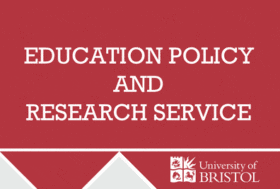What do the concepts of ‘home’ and ‘belonging’ mean for children from different European countries?


This article summaries the following research article:
Maine F, Brummernhenrich B, Chatzianastasi M et al. (2021) Children’s exploration of the concepts of home and belonging: Capturing views from five European countries. International Journal of Educational Research, 110. DOI: .org/10.1016/j.ijer.2021.101876.
Introduction
A sense of belonging is an important part of children’s development of self-awareness and identity formation.
Belonging is linked to six theoretical perspectives – Spatiality, Materiality, Multiplicity, Social Relations, Affect and Dislocation. Spatiality refers to an individual’s feeling of belonging in the place, the scale of which can vary, from the micro-level of the home to the feeling of belonging to a global community. The context of increased voluntary and forced migration has called into question the idea of belonging to just one place or group of people and led to the development of multiple belongings, e.g. belonging to more than one place or group of people. Materiality describes the feeling of belonging through material objects, sometimes linked to ‘home-making’ practices, e.g. the furniture one owns. Social relations refer to the feeling of belonging manifested through membership of different groups or communities. The ‘Affect’ category describes the emotional sense of feeling safe and comfortable at home. It also means feeling autonomous and having agency. Dislocation refers to the negative feelings associated with non-belonging and missing home.
The aim of this research project was to explore how children from different European contexts explore their feelings of belonging.
The research underpinning this summary
Researchers recorded classroom discussions in 56 lessons across five countries. Children were aged 5-6, 8-9 and 14-15 years. The lessons took place as part of a larger research project called DIALLS which focuses on teaching children dialogue and argumentation skills to engage with each other using tolerant, empathetic and inclusive behaviour and developing their cultural literacy. Students watched Baboon on the Moon (Duriez, 2002) as a basis to discuss home and belonging. The film features a baboon who goes about his business on the moon before he takes out a trumpet and plays a song while looking at planet Earth, a tear running down his cheek. Students were encouraged to explore the themes in reference to the text (i.e. action in the film), through personal connections and in an abstract way (i.e. taking into account people more widely). They explored the questions: ‘Is home where you live?’, ‘Where do you belong?’ and ‘What is home?’ Recordings were analysed according to the six themes described above and compared across contexts.
Interestingly, social relations and affect were mentioned most often by children in connection to a sense of belonging. Some notable differences between countries also emerged from the data. For example, significantly more children in Germany than any other country (40%) described belonging in connection with social relations. In Lithuania, children most frequently referred to the affective aspect of belonging, i.e. feeling safe and comfortable at home. Material aspects were mentioned roughly equally often by children in Germany and Cyprus, although less often than social relations, which was interesting because there was a notable difference in the ages of the children in these countries (all classes in Cyprus were 5-6 year olds, but this age group accounted for only one of the German classes).
When speaking about ‘home’, younger children from England, Spain, Lithuania and Cyprus referenced the importance of social relations more often while children from Germany spoke about material aspects more frequently. In the 8-9 age group, English children spoke about social relations, affect and materiality roughly equally while German children in this age group referenced social relations most often. In Spain, on the other hand, children aged 8-9 referenced affect and spatiality most frequently.
Country case studies revealed further details about children’s definitions of ‘home’ and ‘belonging’. To arrive at these results, researchers looked more closely at children’s responses within each of the code groups (e.g. ‘social relations’, ‘affect’). This analysis showed that children in England referred to ‘family’ and ‘safety’ or ‘comfort’ most often although, interestingly, ‘family’ only came up in 13 per cent of contributions. Also, younger children were more likely to refer to family when talking about home and belonging.
In German classrooms, more than a quarter of students mentioned ‘family’ and ‘friends’ as well as ‘pets’, which also form a crucial part of students’ description of home and belonging. Younger students in this group also spoke about material possessions more frequently than older students whilst geographical belonging was mentioned relatively little. The authors note that this could be due to a specificity of the German language which has two words for home, ‘Zuhause’ (associated more strongly with the physical place) and ‘Heimat’ (homeland).
In the Spanish group, children referred to concepts of ‘spatiality’ more frequently, especially concepts relating to one’s origin/place of birth, home as a physical space and a specific region or city. There were not substantial differences between age groups. Other frequently mentioned concepts were those of ‘affect’, i.e. feelings of safety and comfort, and ‘social relations’, i.e. family, especially parents.
In Lithuanian classrooms, younger children most often talked about home and belonging in relation to social relations, especially family, whilst older students referred more often to concepts relating to ‘affect’, i.e. feelings of comfort, security and openness. References to historic instances of ‘exile’ and recent migration due to economic reasons were mentioned more frequently in this than other groups.
Finally, in the Cypriot group, where only the youngest students could be interviewed due to COVID-19 restrictions, social relations, affect and materiality were mentioned most frequently.
The results of this study highlight the social and interactive nature of belonging. Notable age differences also emerged from the data. While younger children referred most frequently to social connections, older children mentioned notions of safety, comfort and confidence more frequently. The data also points to some differences between children from different countries but overall, it becomes clear that all of them agree that a home is more than just a house.
Impact on practice
This paper shows that even very young children are capable of engaging in abstract thinking and discussions about complex concepts such as ‘home’ and ‘belonging’ although overall contributions from younger children tended to be more concrete. The study also highlights that a short, wordless film can encourage deep and meaningful discussions about these important topics. Resources on the DIALLS website provide further ideas and information about the project and how it can help students to develop empathy.








